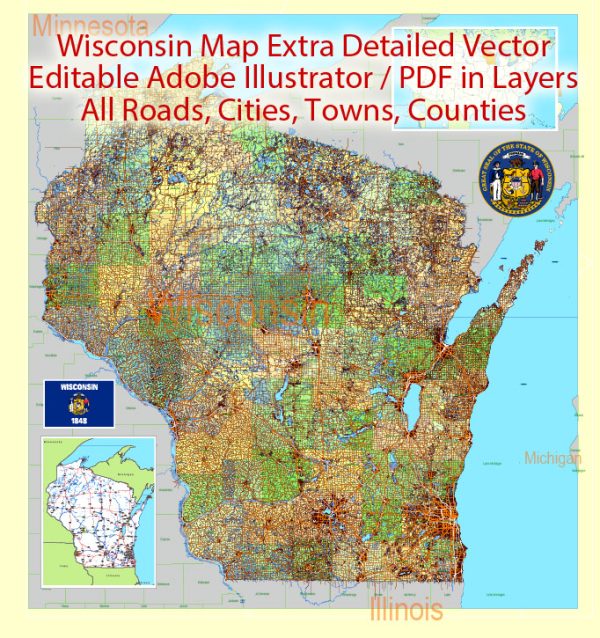Wisconsin’s urban development has a rich history that reflects the broader trends of industrialization, immigration, and economic growth in the United States. Here’s an overview of the history of urban development in Wisconsin:
- Indigenous Settlements: Before European settlement, various Native American tribes inhabited the region that is now Wisconsin. Their settlements were often near waterways, taking advantage of the abundant natural resources for sustenance and trade.
- Early European Settlement and Fur Trade (17th-19th centuries): French explorers and traders were among the first Europeans to arrive in the area. The fur trade, centered around trading posts and forts, played a significant role in the early economic development of Wisconsin. Cities like Green Bay and Prairie du Chien trace their roots to this era.
- Agricultural Expansion and Urban Growth (mid-19th century): The mid-19th century saw a significant influx of European immigrants, particularly Germans, Scandinavians, and Irish, seeking economic opportunities. Milwaukee, founded in 1846, became a major industrial and commercial hub due to its location on Lake Michigan and its connection to the railroad network. Other cities, including Madison and Racine, also began to grow during this period.
- Industrialization and Economic Diversification (late 19th-early 20th centuries): The late 19th and early 20th centuries marked a period of industrialization in Wisconsin. Milwaukee, in particular, became known for its brewing industry, with the presence of famous breweries like Pabst, Schlitz, and Miller. Other industries, including manufacturing and meatpacking, also contributed to urban growth in cities such as Kenosha and Sheboygan.
- Progressive Era Reforms (early 20th century): Wisconsin gained a reputation for progressive politics in the early 20th century under leaders like Robert La Follette. Progressive reforms included workers’ rights, environmental conservation, and social welfare policies. These reforms had implications for urban planning and the development of public infrastructure.
- Post-World War II Suburbanization (mid-20th century): Like many other states, Wisconsin experienced suburbanization and the growth of commuter suburbs in the mid-20th century. This period saw the expansion of suburban areas around cities like Milwaukee and Madison, driven by factors such as increased car ownership and the development of the interstate highway system.
- Contemporary Urban Development and Revitalization: In recent decades, Wisconsin’s cities have undergone revitalization efforts, focusing on downtown redevelopment, waterfront projects, and the enhancement of cultural amenities. Cities like Milwaukee have invested in projects to attract residents and businesses back to the urban core.
- Education and Technology Hubs: Cities like Madison have become education and technology hubs, driven by the presence of the University of Wisconsin-Madison and the growth of industries such as biotechnology. This has contributed to the diversification of the state’s economy and urban landscape.
Today, Wisconsin’s urban areas showcase a mix of historical architecture, industrial heritage, and modern developments, reflecting the state’s dynamic economic and cultural history.


 Author: Kirill Shrayber, Ph.D.
Author: Kirill Shrayber, Ph.D.